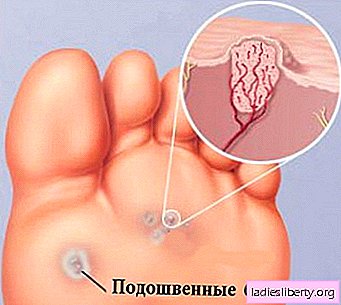
Warts are neoplasms on the skin that are caused by the human papillomavirus. This virus penetrates the skin due to microdamage and can be transmitted by contact.
Warts can occur at any age, however, children or adolescents are most often affected by them. In 25% of cases, all symptoms flow independently for 6 months, and 70% for two years. Warts are flat, ordinary, plantar. Finger-shaped and filiform warts may also occur.
Warts - Causes
Warts are caused due to the virus, so they can easily be transferred to other parts of the body, as well as transmitted to surrounding people. A person can catch this virus in a variety of places, however, for the appearance of warts, two factors are necessary: a certain decrease in immunity, as well as a violation of the integrity of the skin, for example, small cuts and scratches, burrs, mosquito bites and more. Warts develop quite slowly, while they can die out without any intervention. However, if they do not disappear, and their number does not decrease, then it is necessary to get rid of them.
Warts - Symptoms
Usually, warts have the appearance of convex nodules on the skin, which can be found, both single and in the form of some clusters. As for plantar warts, they are mostly flat and dense due to strong pressure. It is highly recommended to immediately consult a doctor if such a wart causes pain, discomfort, and also prevents walking.
Warts - Diagnosis
Often, the diagnosis of warts does not cause absolutely any difficulties, while it is based on the clinical picture. But it is worth noting that they can often disguise themselves as other skin diseases. For example, plantar warts can not be distinguished from ordinary corns every time. At the same time, there is some danger of mistaking a formidable tumor for a simple harmless wart. Therefore, if controversial issues arise, it is best to consult a dermatologist.
Warts - treatment
Quite often, there is no need to treat warts, as they disappear on their own when the immune system is restored. In general, there are a wide variety of methods for removing warts. The most modern method is laser removal of warts. In this case, removing the wart takes no more than two minutes. This is the most aesthetic tool among all existing methods for removing warts. Laser removal is considered the least traumatic. Healing after this method of removal is painless, without requiring any restrictions in playing sports or in contact with water.
There is also a method for removing warts, such as electrocoagulation. This method is the removal of high frequency currents. Among the positive aspects, it is worth noting the fact that this method coagulates the nearest tissue, while blocking the access of the wart virus to other healthy tissues, ensuring the absence of bleeding.
There is a place to remove warts with liquid nitrogen. This method involves deep freezing of warts. In this case, no contact with blood is observed, due to which secondary infection of healthy tissues is completely excluded.
As for the surgical excision of warts, it is accompanied by suturing, leaving behind a noticeable scar. This method of removing warts is associated with blood, which increases the risk of secondary infection, and this, in turn, can cause the appearance of new warts on the skin.
Comments











